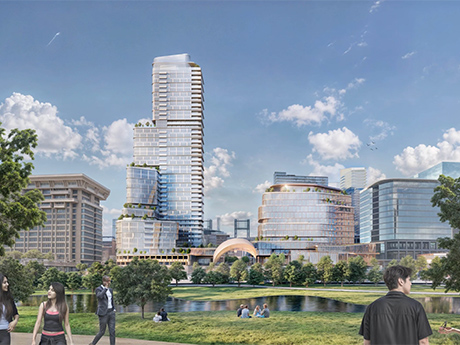By Emily Ackley, NAI DESCO
The St. Louis retail market could be perceived as a contrasting story — national headlines continue to spotlight store closures and shifting consumer habits, and yet on the ground, St. Louis is working to write a quite different narrative.
Vacancy rates remain tight, redevelopment projects are reshaping corridors and both suburban and urban districts are evolving to meet the demands of today’s consumers. It is not a market without its challenges, but St. Louis retail is far from stagnant.

Market conditions
As of the second quarter of 2025, the St. Louis retail market experienced a dynamic shift as a result of low vacancy rates, evolving consumer behavior and significant redevelopment projects across the St. Louis MSA.
The overall retail vacancy rate stands at 4.7 percent, reflecting a 40-basis-point decrease quarter over quarter and an 80-basis-point decrease year over year, indicating a tightening market.
Leasing activity remains robust, particularly in suburban areas of St. Louis, such as West County and St. Charles County, where vacancy rates have decreased by up to 140 basis points in the past year.
This is being supported by a combination of steady population growth in the suburbs, shifting migration patterns and retailers seeking the balance of visibility with affordability. National trends show a shift in consumer behavior, with increased demand for experiential retail and a decline in traditional brick-and-mortar shopping.
This shift is influencing tenant strategies, with many retailers focusing on enhancing in-store experiences and integrating digital platforms to attract consumers and allow them to experience, linger and connect. In this sense, retail in St. Louis is aligning with a national shift toward experience-driven engagement, but with a distinctly local flavor.
Investment market
The capital markets tell more of a cautious story. The retail investment market in St. Louis has seen a slowdown, with sales volume totaling $2.1 billion over the past four quarters, a decrease of 33.4 percent compared to the prior five-year average. Rising interest rates, higher construction costs and operational headwinds have dampened activity and made investors more selective.
Yet those who are buying are buying strategically. Submarkets with strong demographics, anchored by redevelopment or close to growth corridors, continue to attract capital. In today’s climate, quality and vision trump quantity. Investors are not chasing deals — they are backing locations and projects that can stand the test of shifting consumer preferences.
Redevelopment
Perhaps the most exciting storyline this year is the wave of redevelopment projects striving to redefine the metro area. These projects are underway, aiming to revitalize key areas and adapt to changing retail dynamics. Notably, the $232 million mixed-use development in Downtown West, near CityPark, is set to include over 450 apartment units and substantial retail space, reflecting a trend toward integrating residential, commercial and recreational spaces to create vibrant communities.
Similarly, The Cordish Companies’ $670 million redevelopment of the Millennium Hotel site is poised to transform a long-vacant property into a 4.2-acre complex featuring 1.3 million square feet of residential, office, commercial and public spaces, including an amphitheater and food hall. These projects highlight the shift toward mixed-use developments that cater to evolving consumer preferences and urban lifestyles.
Reaching further west and further supporting the demand for mixed-use developments, The Staenberg Group works to create a walkable, urban downtown in the suburb of Chesterfield, Missouri. Formerly Chesterfield Mall, Downtown Chesterfield will exhibit an environment for residents to live, work and socialize to complement the downtown St. Louis and Clayton areas. It is an ambitious project, and one that reflects how suburban markets are increasingly seeking urban-style vibrancy.
Each of these projects shares a common thread — placemaking. Instead of building retail in isolation, developers are creating mixed-use environments that function as a gathering place. Destinations where people can spend time, not just money.
Challenges
But we know that the retail market is not without headwinds. Construction and operating costs remain elevated, putting pressure on both landlords and tenants. Meanwhile, national brands continue to recalibrate their presence and strategies. One of the most high-profile changes is Nordstrom’s closure at the St. Louis Galleria, which acts as a reminder that even strong markets are not immune to broader portfolio strategies.
However, these challenges also present opportunities for adaptive reuse of retail spaces, particularly in downtown areas where demand for office and residential spaces is changing. Developers and investors are exploring innovative solutions to repurpose underutilized retail properties, contributing to the revitalization of urban centers.
Looking ahead
The St. Louis commercial retail market currently exists somewhere between stability and transformation. Vacancy is low and demand is steady, but the kind of demand has shifted. Consumers want experience. Tenants want flexibility. Investors want durability. And developers are leaning into projects that weave together living, working, shopping and socializing.
St. Louis is building the next chapter of retail around community and connection. That may mean a few growing pains along the way, but for landlords, tenants and investors who can adapt, the opportunity is here.
Emily Ackley is a vice president with NAI DESCO. This article originally appeared in the September 2025 issue of Heartland Real Estate Business magazine.


